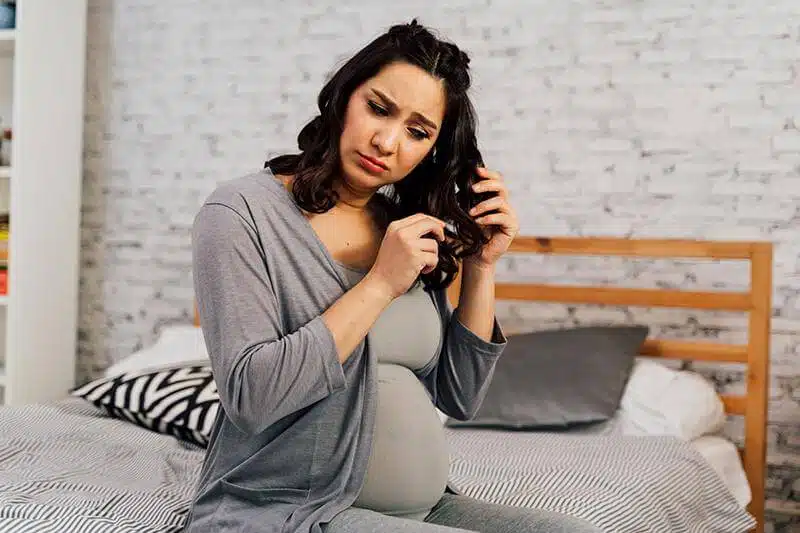Although baldness has been associated in the collective perception more with the male sex, the occurrence of hair loss in women is by no means a phenomenon that can be characterized as rare.
The psychological effects of such a situation are much greater, as rich hair is traditionally considered a symbol of femininity.
The causes that can lead to hair loss are many and different.
However, it has been proven that in a very large percentage of cases, hair loss is linked to hormones.
When the hormonal balance in a woman’s body is disturbed, it is very likely that this will result in hair loss.
It is a hormone that is associated with the male sex, however, it is normally produced in small amounts in the female body as well.
Testosterone is at the core of the hair loss process as its derivative dihydrotestosterone (DHT) is blamed for androgenetic alopecia.
Increased levels of testosterone in a woman can lead to increased hair growth on other parts of the body – on the face for example, and thinning or hair loss.
-
Estrogen works beneficially by protecting hair from the degenerative action of DHT and helping more hair remain in the anagen phase.
Modern research seems to lead to the conclusion that the balance between estrogen and progesterone has an essential role in terms of hair growth and its possible disruption can lead to hair degeneration and hair loss.
This is also the reason why the above results can arise not only from the reduction of estrogen levels, but also from their excessive increase.
Disturbance of the balance resulting in an excess of estrogen can come from various causes such as weight gain, endocrine disorders or normally the period close to menopause.
Periods in a woman’s life when she is likely to experience hair loss
During pregnancy the levels of both estrogen and progesterone are particularly high.
This results in a woman’s hair during this period being more healthy and voluminous than ever before.
The sharp drop in the levels of the above hormones after the end of pregnancy leads to increased hair loss as it results in a large part of the hair entering the telogen phase.
The above condition can last from a few months to in some cases even two years after the birth, it is however normal and in fact the part of the hair that is lost is the “extra” during pregnancy.
Hair loss is common during menopause.
Estrogen levels that are primarily produced in the ovaries fall.
However, a small part of them continues to be produced in other parts of the body.
Unlike estrogens which are available from other sources, this is for a very small percentage of progesterone.
The above fact results in the relationship between the two hormones being disturbed.
This can result in hair loss along with other typical symptoms of menopause.
Another condition in which the hormones in the female body are out of balance is polycystic ovary syndrome.
For reasons that are not yet fully understood, the ovaries produce slightly more androgens than normal.
This is likely to lead to increased hair growth on other parts of the body or hair loss.



